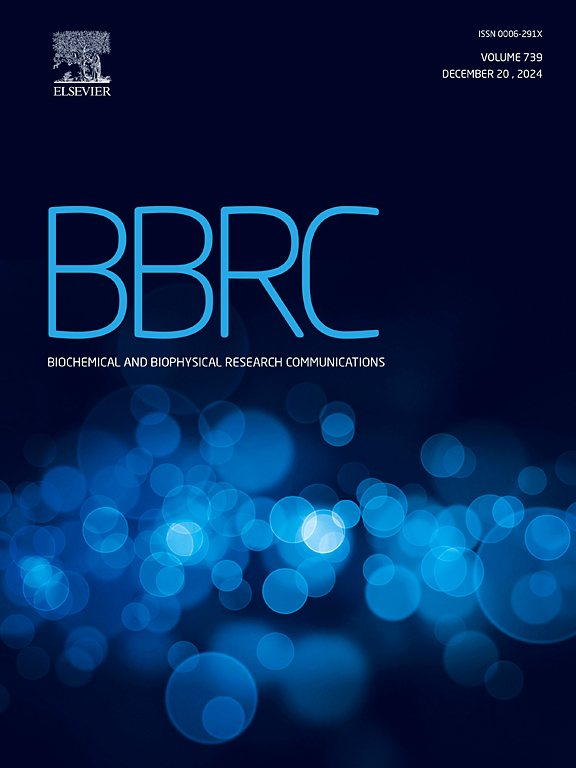从结构上洞察白斑综合征病毒胸腺嘧啶酸合成酶的配体相互作用
IF 2.5
3区 生物学
Q3 BIOCHEMISTRY & MOLECULAR BIOLOGY
Biochemical and biophysical research communications
Pub Date : 2025-03-22
DOI:10.1016/j.bbrc.2025.151683
引用次数: 0
摘要
本文章由计算机程序翻译,如有差异,请以英文原文为准。
Structural insight into ligand interactions of thymidylate synthase from white spot syndrome virus
White spot syndrome virus (WSSV) is one of the deadliest crustacean pathogens, causing huge economic loss in global shrimp industry. WSSV encodes a thymidylate synthase (wTS) that is essential for DNA replication and viral proliferation, serving as a promising drug target against WSSV infections. To aid drug design, we solved wTS structures in complex with dUMP and dUMP/raltitrexed, at 2.28 Å and 1.43 Å resolutions, respectively. wTS forms a homodimer and each ligand-binding cavity is contributed by both monomers. In wTS-dUMP binary structure, the protein adopts an open conformation, with dUMP bound to the cavity through extensive hydrogen bonds and salt bridges. In wTS-dUMP-raltitrexed ternary structure, the protein exhibits a closed conformation; the TS inhibitor raltitrexed contacts intensively with the protein and dUMP via hydrogen bonding and hydrophobic interactions, resulting in the covalent bond formation between dUMP and the catalytic cysteine. Pairwise comparison of the structures of wTS and shrimp TS shows that they share similarity in the dUMP bound forms but differ significantly in the dUMP/raltitrexed bound forms: wTS presents a more tightly closed conformation than shrimp TS, showing more interactions with raltitrexed. As the ligand binding residues are conserved between the two proteins, the observed structural differences are supposed to originate from the variations in other vicinity residues. In sum, the comparative structural study on the homologous viral and host proteins would boost the opportunity to design wTS-specific inhibitors against WSSV infections.
求助全文
通过发布文献求助,成功后即可免费获取论文全文。
去求助
来源期刊
CiteScore
6.10
自引率
0.00%
发文量
1400
审稿时长
14 days
期刊介绍:
Biochemical and Biophysical Research Communications is the premier international journal devoted to the very rapid dissemination of timely and significant experimental results in diverse fields of biological research. The development of the "Breakthroughs and Views" section brings the minireview format to the journal, and issues often contain collections of special interest manuscripts. BBRC is published weekly (52 issues/year).Research Areas now include: Biochemistry; biophysics; cell biology; developmental biology; immunology
; molecular biology; neurobiology; plant biology and proteomics

 求助内容:
求助内容: 应助结果提醒方式:
应助结果提醒方式:


